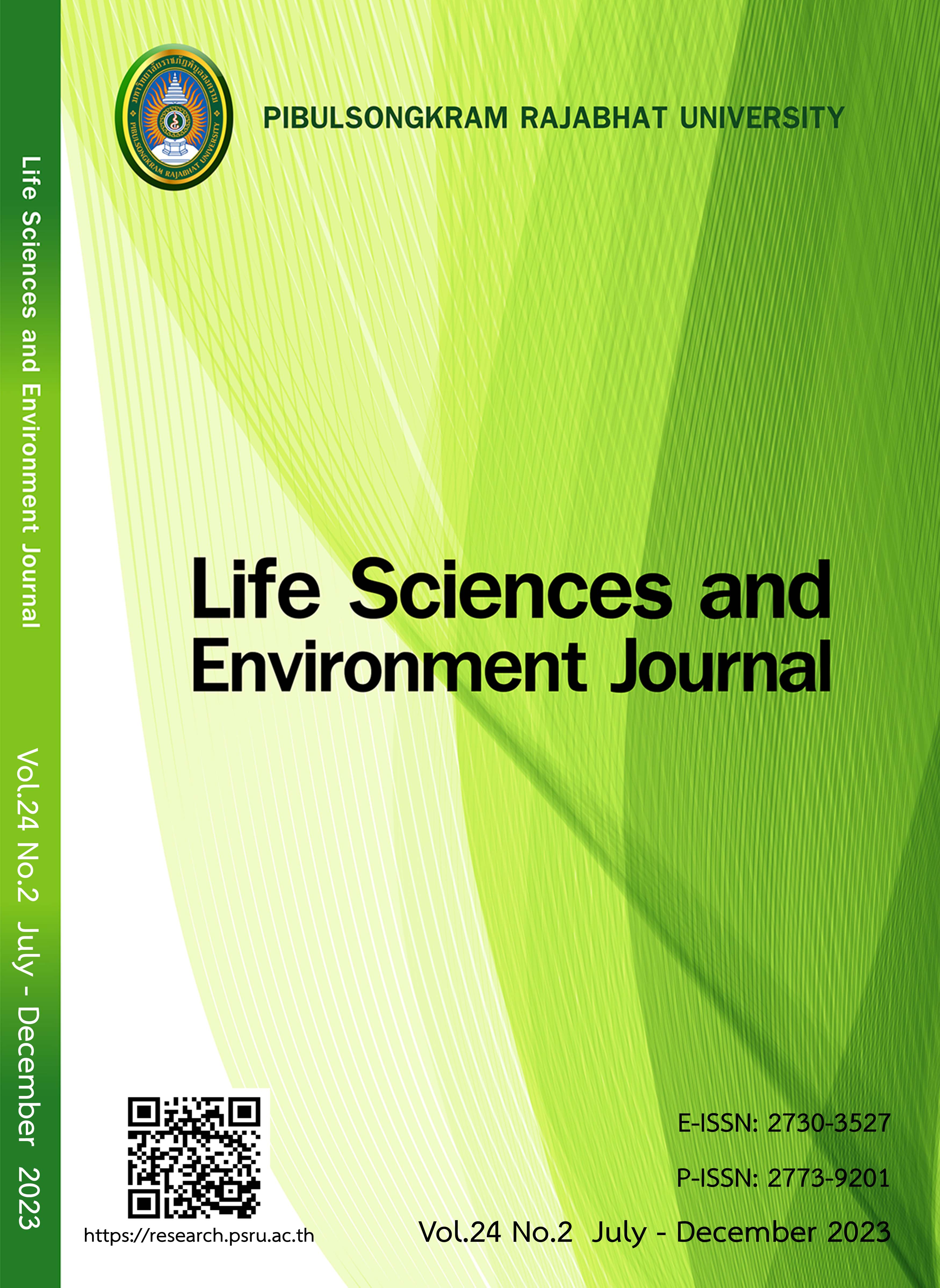ENVIRONMENTAL-FRIENDLY ION EXCHANGE RESIN FROM WATER HYACINTH
DOI:
https://doi.org/10.14456/lsej.2023.33Keywords:
Ion exchange resin, Environmentally friendly, Water hyacinth, Citric acidAbstract
The objective of this research was to prepare ion exchange resin using environmentally friendly processes and materials. Ion exchange resin was synthesized by the non-strong acid catalytic esterification of cellulose in water hyacinth and citric acid at optimal operating conditions. The highest total ion exchange capacity, in terms of free carboxylic content, was obtained when the reaction was performed at 60oC for 1 hour, then increased to 140oC for 1.5 hours after pre-treatment of water hyacinth with 0.4 mol/l of sodium hydroxide. The average carboxylic content of synthetic resin was 4.49 ± 0.11 meq/g. The morphology and functional groups of synthetic resin were characterized by SEM and FTIR, respectively. Adsorption study of the chromium (III) ion in aqueous solution by batch and column methods showed that the synthetic resin had good adsorption efficiency. The sorption capacities were 21.96–23.02 mg/g. In a three-cycle regeneration test with 0.25mol/l nitric acid, adsorption efficiencies by batch and column methods decreased progressively by less than 45% in the second cycle. Therefore, it is not suitable for reuse more than two times. However, the synthetic resin offered stable adsorption efficiency throughout the storage period of 18 months. The ion exchange resin prepared in this research is biodegradable and low-toxic, so it is friendly to animals, humans, and the environment. In addition, it has a low cost, reusability, and long storage time, so it has a high probability of application in many fields, such as environment (metal adsorbent in waste water), water hardness treatment and chemical analysis (preconcentration and separation).
References
Ahmed IW, Maaly AK, Hanaa MA, Islam MA. Application of amino-functionalized cellulose-poly(glycidyl methacrylate) graft copolymer (AM-Cell-g-PGMA) adsorbent for dyes removal from wastewater. Cleaner Engineering and Technology 2022;6:1-9.
Bo Z, Tongxiang F, Di Z. Adsorption of copper ions from aqueous solution by citric acid modified soybean straw. Journal of Hazardous Materials 2008;153:300-308.
Ezzat MS, Salwa AA, Aliaa AF. Removal of calcium ions from aqueous solutions by sugar cane bagasse modified with carboxylic acids using microwave-assisted solvent-free synthesis. Desalination 2011;278(1-3):18-25.
Hamdi SA, Aykut T, Meltem Ç, Nurdan B. Hardness removal from waters by using citric acid modified pine cone. Journal of the Taiwan Institute of Chemical Engineers 2016;58:219-225.
Hayani A, Mountadar s, Tahiri S, Mountadar M. Softening of hard water by ion exchange with strongly acidic cationic resin. Application to the brackish groundwater of the coastal area of El Jadida province (Morocco). Journal of Materials and Environmental Sciences 2016;7(10):3875–3884.
James DM, Roger MR, Soo-Hong M. Effect of citric acid modification of aspen wood on sorption of copper ion. Journal of Natural Fibers 2006;3(1):43-58.
Min L, Ming-yu L, Qing-xuan Z. Preparation and characterization of multi-carboxyl-functionalized silica gel for removal of Cu (II), Cd (II), Ni (II) and Zn (II) from aqueous solution. Applied Surface Science 2014;314:1063-1069.
Norasikin S, Muhammad UR, Jimmy W, Hanapi M. Recovery of Au (III) from an aqueous solution by aminopropyltriethoxysilane-functionalized lignocellulosic based adsorbents. Reactive and Functional Polymers 2018;123:106-114.
Osvaldo KJ, Leandro VAG, Rossimiriam PF, Laurent FG. Adsorption of Cu(II), Cd(II), and Pb(II) from aqueous single metal solutions by mercerized cellulose and mercerized sugarcane bagasse chemically modified with EDTA dianhydride (EDTAD). Carbohydrate Polymers 2009;77(3): 643-650.
Pannipa P, Watcharee B, Phipat L. Synthesis of cation exchange resin from water hyacinth chemically modified with citric acid. Science and Technology Nakhon Sawan Rajabhat University Journal 2017;9(10):11-30.
Rakesh KS, Parul P. Preconcentration and determination of trace metal ions from aqueous samples by newly developed gallic acid modified Amberlite XAD-16 chelating resin. Journal of Hazardous Materials 2009;163:295-301.
Ratchapol P. The optimal condition for hydrolyses preparation from water hyacinth using autoclave for ethanol production. Varidian E-Journal SU 2011;4(1):891-901.
Sadegh K, Nadia N, Mohammad R, Homayon AP. A new functionalized resin and its application in flame atomic absorption spectrophotometric determination of trace amounts of heavy metal ions after solid phase extraction in water samples. Microchemical Journal 2013;106:147-153.
Siyi W, Shunyan N, Wei Z, Shichang Z, Jie Z, Xinpeng W, Yuezhou W. Synthesis of carboxyl group functionalized silica composite resin for strontium removal. Materials & Design 2020;185:1-9.
Vihangraj VK, Animes KG, Pranab KG. Synthesis and characterization of carboxylic cation exchange
bio-resin for heavy metal remediation. Journal of Hazardous Materials 2018;341:207-217.
Xiaolin Y, Shengrui T, Maofa G, Lingyan W, Junchao Z, Changyan C, Weiguo S. Adsorption of heavy
metal ions from aqueous solution by carboxylated cellulose nanocrystals. Journal of Environmental Sciences 2013;25(5):933-943.
Yongbo D, Lei X, Zhimin Q, Huiyu D, Honglan S. Preparation of green biosorbent using rice hull to preconcentrate, remove and recover heavy metal and other metal elements from water. Chemosphere Volume 2021;262:127940.
Downloads
Published
How to Cite
Issue
Section
License
Copyright (c) 2023 Life Sciences and Environment Journal

This work is licensed under a Creative Commons Attribution-NonCommercial-NoDerivatives 4.0 International License.
Each article is copyrighted © by its author(s) and is published under license from the author(s).










